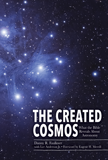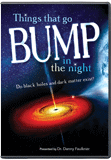
PhysOrg: “NASA Scientist Finds ‘Alien Life’ Fossils”
As with previous “life from space” stories, the meteorite itself may be grounds for level-headed research, but the claims and media reports have vastly outpaced the scientifically established findings.
News Source
- PhysOrg: “NASA Scientist Finds ‘Alien Life’ Fossils”
The bold news headlines seemed clear—and overstated, in the case of a Digital Trends article (carried by Yahoo! News) announcing, “NASA scientist finds evidence of alien life.” While other headlines were slightly more conservative in their wording, the tone of much of the initial media coverage paralleled the Digital Trends report, whose first paragraph informed readers, “Aliens exist, and we have proof.”
What’s the news? NASA astrobiologist Richard Hoover has published research in the Journal of Cosmology in which he purportedly documents fossils of “microscopic earthworm-like creatures” found inside meteorites. Hoover insists the objects could not be the result of contamination. (You can read our initial reaction to the news in “Alleged Alien Life in Meteorite.”) “I interpret it as indicating that life is more broadly distributed than restricted strictly to the planet earth,” Hoover told FoxNews.com.
Among the points we noted in our earlier coverage are, first, that pieces of Hoover’s research had actually been announced years ago and, second, that even a great many non-creationists have been quick to criticize the research. For instance, none of our preferred news sources even bothered to report on the find, although ScienceNOW sibling ScienceInsider featured the story Bugs From Space? Forget It. Among the relevant details in that article:
Planetary scientists . . . fear that for the third time in 50 years they are being dragged into a dubious controversy that will do science little good. Whether they have closely examined the paper . . . or only heard about it in the hallways, the reaction is the same: not again.
In perhaps the most infamous earlier episode, a group of researchers at a 1996 NASA press conference showed photomicrographs of squiggly, wormlike objects that they had found in a meteorite from Mars. The wormy objects drew immediate criticism and soon turned out to be nothing more than suggestively shaped minerals viewed with an exceptionally powerful microscope.
[One meteoriticist] can’t say what Hoover’s objects are, but he sees no reason to think they are biological. The filaments are too simple to even hint at a biological origin[.] . . . Their shapes could easily have been generated by nonliving chemical reactions[.]
Along the same lines, one reader passed along a Google News listing revealing a slew of other articles questioning both the research itself and, perhaps even more strongly, the hasty and generally credulous initial reporting. A Huffington Post article even claims Hoover was misleadingly listed by the Journal of Cosmology as possessing a PhD when he lacks one, a claim apparently acknowledged by a NASA representative.
The Journal of Cosmology is strange in itself. Although the journal website bills itself as a “Prestigious Scientific Journal” [sic], an official statement on the website regarding Hoover’s research called critics of the research “crackpots,” “charlatans,” and even “[t]errorist[s].” The journal appears to have been in existence less than two years, and its website brazenly peddles books, many of which appear to have been authored by the journal’s editors. Interestingly, the books all seem to dogmatically defend the idea that life on earth came from outer space, even insisting that the idea “overturns Darwin’s theory of evolution.” In fact, the journal has even published an article on Genesis’s account of creation, though it is not from a young-earth creation perspective nor is it representative of the diverse topics tackled in the journal’s articles. (National Geographic-affiliated blog Breaking Orbit also carries an interesting post about the journal and Hoover’s article.)
Even if it were confirmed that these objects are fossil life, Hoover hasn’t fully negated the possibility of contamination, such as before the meteorites were discovered or since they were recovered.
As with previous “life from space” stories, the meteorite itself may be grounds for level-headed research, but the claims and media reports have vastly outpaced the scientifically established findings. What we know is only that this meteorite contains microscopic “filament” structures that bear some resemblance to known life-forms, but that also may be produced through non-biological processes. But even if it were confirmed that these objects are fossil life, Hoover hasn’t fully negated the possibility of contamination, such as before the meteorites were discovered or since they were recovered. So once again, what appeared at first to be a striking challenge to Genesis has quickly fizzled into another reminder about the importance of being an educated consumer of science news.
Further Reading
For More Information: Get Answers
Remember, if you see a news story that might merit some attention, let us know about it! (Note: if the story originates from the Associated Press, FOX News, MSNBC, the New York Times, or another major national media outlet, we will most likely have already heard about it.) And thanks to all of our readers who have submitted great news tips to us. If you didn’t catch all the latest News to Know, why not take a look to see what you’ve missed?
(Please note that links will take you directly to the source. Answers in Genesis is not responsible for content on the websites to which we refer. For more information, please see our Privacy Policy.)
Recommended Resources

Answers in Genesis is an apologetics ministry, dedicated to helping Christians defend their faith and proclaim the good news of Jesus Christ.
- Customer Service 800.778.3390
- © 2024 Answers in Genesis



